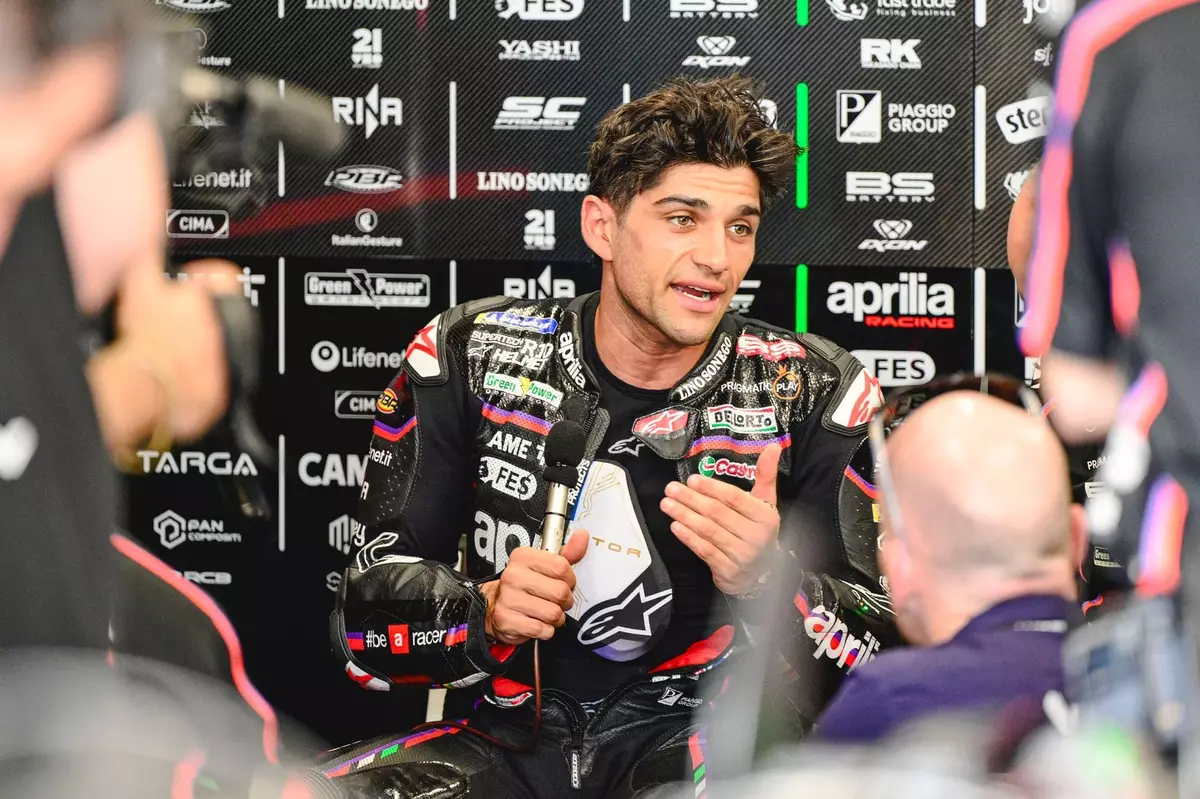In the world of MotoGP, where speed and precision define the racing spirit, the underlying politics of contracts often fuel drama that can be as riveting as the races themselves. This is certainly the case with Jorge Martin’s recent announcement of intent to terminate his contract with Aprilia by the end of the 2025 season, igniting a firestorm of speculation and controversy within the MotoGP paddock. The shrouded silence from both parties—autonomously diving into a contractual quagmire—has raised eyebrows and triggered whispers of discontent, marking a troubling period for a company that has invested significantly in his talents.
Martin has chosen not to disclose his reasons publicly, yet the unsettling undercurrents suggest a significant breach of trust. His abrupt maneuvering reflects an attitude that is rarely forgiven in the unforgiving world of competitive motorsport. The early conclusion of this partnership, once filled with promise, threatens to turn sour, potentially damaging reputations on both sides.
The Enigma of Injury and Performance Clauses
At the heart of this controversy lies a contract clause that has created a battleground for both Martin and Aprilia. The clause ostensibly grants Martin the right to walk away by utilizing a performance benchmark after six races; if not in the top three, he can exit stage left. However, injuries have hampered Martin’s racing ambitions, with five missed races this season, leaving the integrity of that clause in question. From an operational standpoint, Aprilia claims these injuries render the clause null and void, a position that raises critical questions about how companies navigate the unpredictability of racer injuries.
On the flip side, Martin’s proposition to extend this clause by six races upon his recovery shows hints of goodwill; after all, it is an attempt to provide both parties further opportunity to evaluate each other’s capabilities. Nonetheless, claiming that performance should dictate contract validity can be considered an ill-formed perspective where the unpredictability of injuries comes into play. The sport’s inherent risks demand a more nuanced understanding of commitment, one that transcends the spelled terms of a contract.
The PR Fallout and Questions of Loyalty
As this contract drama unfolds, the public relations implications for Aprilia are staggering. The image of a brand entwined in a contract quagmire, coupled with Martin’s injuries, signals potential instability in loyalty and performance. Racing fans and industry critics alike may brand Martin as disloyal, suggesting he stepped into the Aprilia machine with one foot already out the door. This perception could irreparably affect Martin’s image, leading to further complications in future negotiations and contracts.
Aprilia, perhaps ironically, finds itself in a precarious position, having courted Martin’s talent passionately less than a year ago. That a brand could craft a complex deal while leaving itself exposed opens conversations about decision-making within the high-pressure environment of MotoGP. It’s a stark reminder that the seemingly glamorized allure of racing contracts comes with hidden complexities—a high-stakes gamble in an already turbulent arena.
Discord, Debate, and the Road Ahead
The absence of formal statements from either party speaks volumes about the discord at the heart of their relationship. Communication behind closed doors appears to be a common practice, with whispers of meetings between Rivola and representatives from Honda indicating a larger conversation happening outside the public eye. It creates a sense of unease; if stakeholders in the community are engaged in their negotiations, what does it reveal about the crumbling alliance between Martin and Aprilia?
As the MotoGP community anticipates how this saga unfolds, it becomes clear that the ramifications extend beyond a single contract. Questions of loyalty, commitment, and the true spirit of competition surface as both parties hover on the precipice of potential legal battles. The fascinating world of MotoGP demonstrates that while the races embody unrestrained speed, the intricate web of contracts and personal relationships can bring forth unexpected turbulence that might feel just as intense.
In this tempest, the stakes are not just financial; they touch on personal integrity, brand image, and ultimately the future of a captivating sport. Fans are left on the edge of their seats, eager to see how the ensuing drama will play out for Martin, Aprilia, and the world of MotoGP at large.

